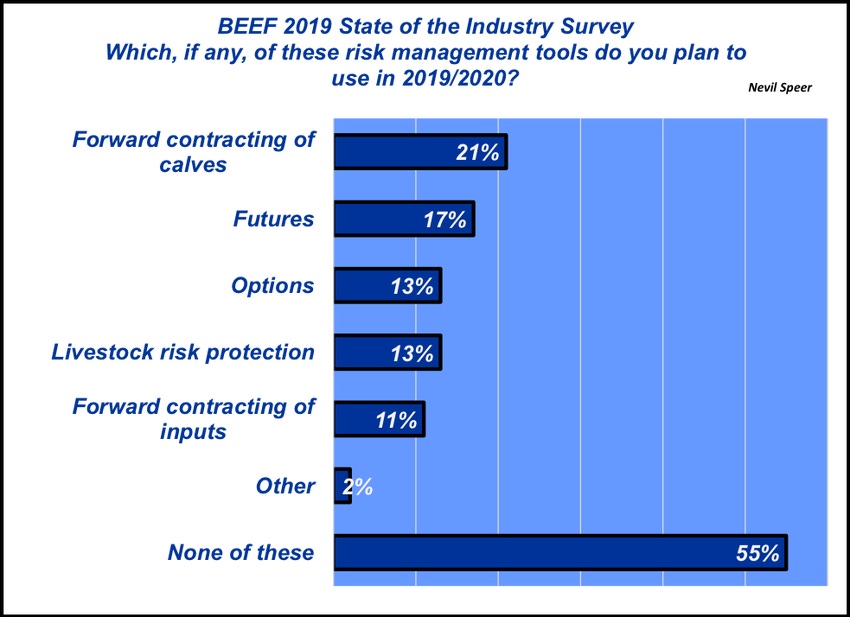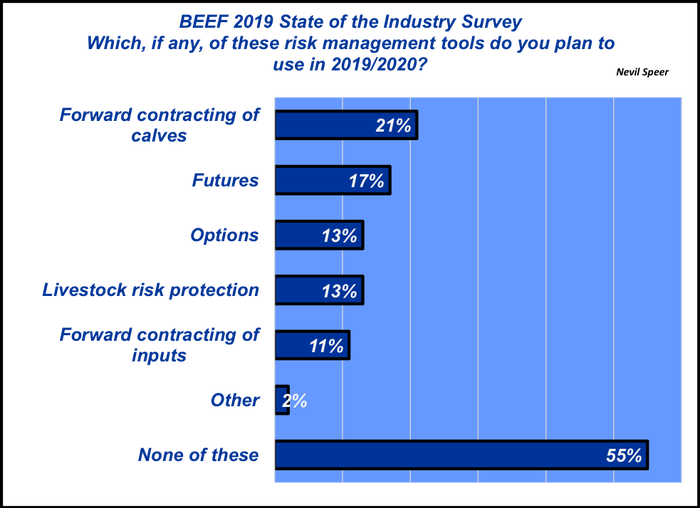Keeping the operation whole: Risk management tools for beef producers
Aside from futures and options, there are a number of risk management tools available to producers.
August 15, 2019

Informa Engage Research recently conducted BEEF’s annual State of the Industry survey to assess general attitudes and trends among producers. Results reflect 876 completed surveys from producers in all U.S. states except Hawaii, Maine, Maryland, Massachusetts, Nevada, New Jersey, South Carolina and Vermont. The results add up to more than 100% because some producers use more than one of the options to manage their risk.
There are several important trends contained within the survey, including producers’ use of various risk management opportunities. That said, Industry At A Glance has committed six weeks to the practical considerations surrounding the use of futures markets. The purpose of doing so is to call attention to risk management and the nut-and-bolts surrounding how markets work—hopefully empowering producers to increasingly utilize the market risk tools readily available to them.

Meanwhile, though, there are any number of other risk management tools available to producers. Perhaps most important among those tools include:
Increasing working capital
Managing costs
Restructuring debt
Locking in margins
The beef business is inherently challenging. Aside from futures markets and the items listed above, producers are utilizing other tools, too. This week’s illustration features some of those practices.
For example, nearly one in five respondents are active in forward contracting. And just a little over 10% are also contracting on the input side.
Perhaps most important, though—more than half of survey respondents indicate they’re not utilizing any of these tools.
The beef business is inherently challenging and requires careful management of one’s business against potential shocks from the outside. Where do you fall within the realm of these results? What other important or key categories would you add in response to the question? Leave your thoughts below.
Speer serves as an industry consultant and is based in Bowling Green, Ky. Contact him at [email protected]
About the Author(s)
You May Also Like




.png?width=300&auto=webp&quality=80&disable=upscale)
